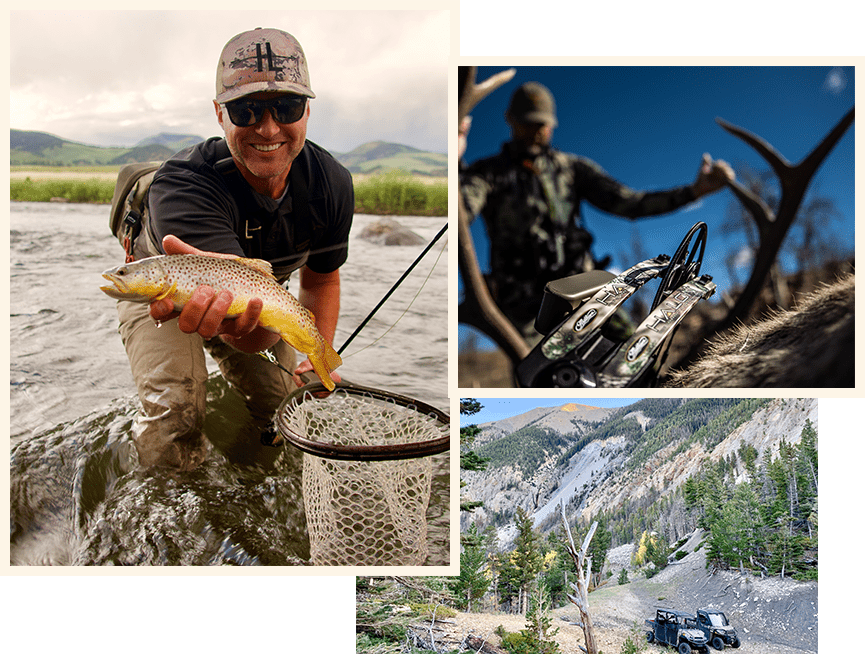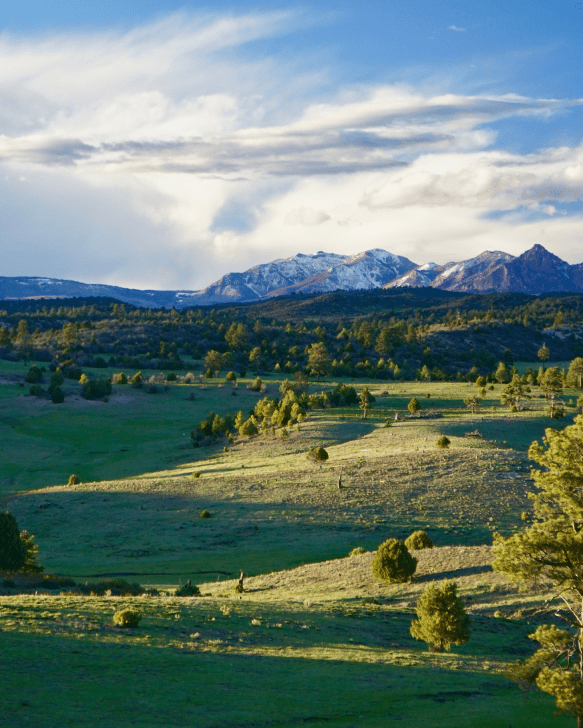Buying ranch property can be a complex endeavor. Prospective investors must consider a number of factors before making a purchasing decision. Water access, grazable acreage, the health of the property’s wildlife habitat, the condition of the property’s improvements … everything deserves a keen eye. For investors considering ranch property that comes with a public lands grazing permit, there’s one more item to carefully review.
What is a grazing permit? Across the country, there are more than 600 million acres of public lands. These lands are managed by a number of agencies, but most ranch owners only deal with a pair of federal land-management agencies — the U.S. Department of Agriculture (via the U.S. Forest Service) and the Bureau of Land Management. These agencies allot significant acreage across the West for livestock grazing — these allotments are called grazing leases, and ranchers can purchase a grazing permit to run cattle or sheep on these select tracts of public lands.
Many ranchers, through their base property or their ranch company, hold grazing permits that enhance the value of the ranch’s base property. Some leases only allow for seasonal use, with strict “put-on” and “take-off” dates. Other leases allow year-round use. Either way, permits to grazing leases have tangible value to ranchers and to prospective ranch property buyers.
Here’s what prospective investors should consider when looking at a ranch that includes grazing lease:
How much does the lease cost and what benefits do they have?
Cost for a grazing lease on public lands varies between state and federal entities. BLM and USFS both base their costs on $1.35 per AUM or Head Month (see explanations below) while state leases typically are more expensive. When considering a ranch that comes with a grazing lease, a prospective buyer will want to know the annual cost of the lease.
Most of the time, a grazing lease adds significant value to the ranch for sale, simply because it allows a ranch owner to run more livestock than the ranch, by itself, could feasibly accommodate. Controlling grazing on adjacent public lands also gives you more flexibility on how to manage your private land for both livestock and wildlife. A grazing permit has the potential to be very lucrative to a livestock operation and, therefore, it can greatly improve the value of ranch property.
How many animals are allowed under the lease?
Ranches for sale that include grazing leases are restricted by those leases to a predetermined number of animals that can be run under the grazing permit. The BLM determines the carrying capacity of a grazing lease and the number of animals a leaseholder can run based on what’s called an AUM (animal unit month). A single AUM consists of feed needed for a 1,000-pound cow and a calf for one month. Anyone considering purchasing a ranch that comes with a BLM grazing permit should know the number of AUM’s for any BLM grazing leases associated with the ranch and use that number to help determine the ranch’s carrying capacity.
The Forest Service uses a similar formula for determining a lease’s carrying capacity. Called a “head month,” the USFS considers the average range needed over a one-month period for a cow/calf pair, five goats or sheep, or by a single bull, steer, heifer, horse, burro or mule.
The actual AUM/HM figure may vary from lease to lease, and it depends on a number of factors, including:
- Environmental assessments. The managing agency will take into account the health of the land before determining a reasonable AUM/HM limit for the grazing permit.
- Access to water. A cattle grazing lease agreement will often hinge on the abundance (or lack of abundance) of water on the grazing allotment. If more water is available, the AUM/HM limit will likely be higher (assuming there’s enough browse to support it). The same is true for a sheep grazing lease agreement.
- The grazing lease management plan. Often, the managing agency leases land to ranchers under the notion that grazing livestock will actually improve the overall habitat on the land. This might mean that grazing cattle or sheep are intended to remove potential wildfire fuels, or tackle non-native weeds that are choking out native vegetation. Other aspects of a management plan could include the preferred time of the year for grazing (the “put-on” and “take-off” dates), how often livestock are moved to new pasture or how long the animals can stay on the grazing lease. But every management plan will include the preferred AUM/HM limit, as determined by the managing agency.
How does the grazing lease transfer with a ranch sale?
This is obviously important. Want to buy a ranch with an attached grazing permit(s)? Make sure to understand the requirements for properly transferring associated leases and permits into your name. Generally speaking, a BLM grazing lease is the easiest to transfer, and it can usually be subleased to another rancher. A lease managed by the U.S. Forest Service can generally be transferred, but not subleased, and proof of livestock ownership and a registered brand are often required. If a rancher is leasing state land (which is fairly common in the West), any transfers or subleases will likely have to be negotiated with the state land management agency. During the due diligence period, ranch buyers or investors should introduce themselves to the managing agency’s local representative and let them know that a sale of the base property is likely in the coming weeks or months and that any grazing obligations would likely be transferred or applied for by the new owner. This introduction will grease the wheels for any post-closing transfers or applications and get you started off on the right foot with state or federal agencies. The local representatives from these agencies are oftentimes familiar with the ranch and can be a wealth of knowledge for a prospective buyer.
This is all just part of the due diligence every investor must put into practice when buying a ranch, and shouldn’t be considered an onerous task. It’s just part of doing business.
The bottom line
A grazing permit and access to a grazing lease for ranch livestock can enhance the value of ranch property. Prospective buyers need to gather all the information about the respective leases and permits. They should get to know the ground that’s being leased. They should understand the environmental assessment of the leased land and know what limits that assessment places on grazing permit holders. Buyers should know the lease’s AUM/HM limit, its water assets, and the time of year the lease can be grazed.
Finally, they should know the costs associated with the leases and how to get those leases to transfer with the sale of the base property. But most of all, buyers should understand that a grazing lease on public lands is a valuable asset when it’s associated with ranch property and something to be stewarded well and understood.


